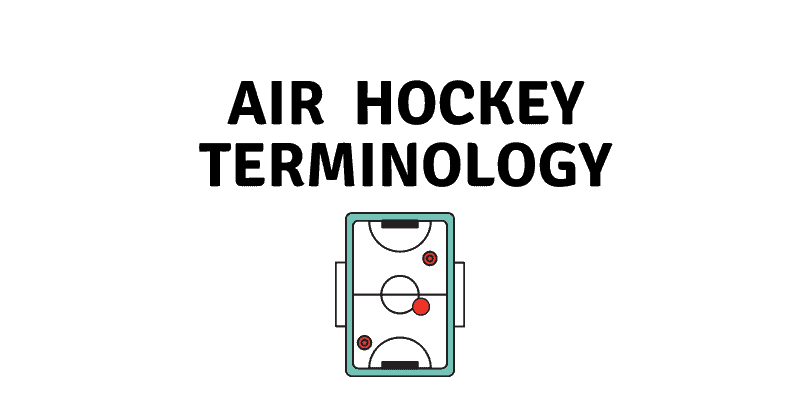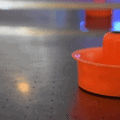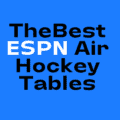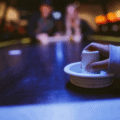Air hockey is a fun and exciting game that tests your reflexes and precision. Many people play air hockey as a way to relax and bond with friends and family, but you can play it as a competitive sport as well if you have the skill. Whatever your reason for wanting to play air hockey, one thing’s for sure- air hockey terminology can be extremely confusing, especially for beginners.
Air hockey is a enjoyable pastime, but you may find all the different terms and jargon intimidating. One of the best ways to get a grounding in the sport is to learn the essential air hockey terminology so that you understand what’s going on, whether you’re playing or observing.
Understanding air hockey terminology is also essential if you want to participate in online forum discussions or read news coverage about the sport.
In this article, we’ll explain all the air hockey terminology you need to know in straightforward, uncomplicated language so that you can hold your own in any air hockey discussion. Below, you’ll hear all the common terms used during air hockey gameplay.
Banking: A move where you aim the puck at the side rail so that it ricochets off and into the goal. You may also hear this move referred to as a ‘bank shot’.
Block: The act of defending your goal against your opponent. You place your mallet in the way of your goal to stop the puck from entering.
Casting: A little like serving in tennis, casting involves using your hand to propel the pluck into play at the beginning of a game. You also cast after a player scores a goal.
Centerline: A demarcation that runs horizontally in the middle of the air hockey table, splitting it in half. There is a large circle overlapping the centerline on an air hockey table. Please note that some tables have additional lines, which show fouling areas.
Charging: The movement of your mallet to push your puck forward when taking a shot at the goal.
Chase Shot: The move when you chase a puck that’s about to cross over the centerline to take a shot.
Defender: The player without the puck who is defending their goal.
Drift: Lightly striking the puck to create the ideal position to take a shot at the goal.
Goal: The gap where you aim to hit the puck to score a goal. There is a goal at each end of an air hockey table.
Goaltending: A foul where the defending player uses the palm of their hand to deflect their opponent’s shot. The opponent is awarded a single penalty in this situation.
Knob: The uppermost section of the handle in the middle of the mallet used for gripping.
Mallet: The tool used to move the puck around the air hockey table during gameplay. It is used for both shooting and defending. You may also hear it called a paddle, pusher, striker, or goalie.
Offense: The attacking player with possession of the puck. This player may also be referred to as the attacker.
Out of Play: A period where the puck is inactive and players are not allowed to take shots. Out of play situations include agreed timeouts or after a penalty or foul takes place.
Over the Centerline: An over the centerline penalty allows the player to take a shot at the puck from their opponent’s side of the air hockey table.
Over the Mallet Shot: A banking move where the puck rebounds off the rail and passes in front of or above the opponent’s mallet before passing into the goal. These shots are categorized as LWO (left-wall over) or RWO (right-wall over), depending on which rail the puck bounces off when making the attack.
Palming: A foul where one of the players touches the puck with any part of the hand or any object apart from their mallet.
Possession: When a player controls the puck while attempting to score a goal.
Puck: A flat, circular piece of equipment that players move around the table to try and score. The puck is the equivalent of the ball in regular hockey.
Pump: Feigning a shot to mislead your opponent before making a genuine attack.
Rails: The guards at the side of the air hockey table that prevent the puck from sliding off, also known as walls.
Shot: Hitting or pushing the puck with the mallet to try and propel it into the opposition’s goal.
Straight Shot: Hitting the puck directly at the opposite goal to try and score without it rebounding off or touching the table’s rails.
Topping: A foul that involves touching the top surface of the puck with the mallet.
Triangle Defense: A defensive strategy that involves creating a triangular motion with both mallets in front of the goal to deflect attacks.
Turnover: The switch between having control of the puck and losing it to your opponent, or vice versa.
Under the Mallet: A type of banking where the puck rebounds off the table rail and moves behind or underneath the opponent’s mallet before passing into the goal. Like an Over the Mallet shot, an Under the mallet shot can be either LWU (left-wall under) or RWU (right-wall under).
USAA: Stands for the United States Air Hockey Association that sets commonly-accepted rules and oversees competitions.
The Bottom Line
Hopefully, you now have a better understanding of all the most common air hockey terminology. Don’t worry if you find it difficult to remember all these terms at first, as there are a lot to get to grips with.
The best way to remember important air hockey terms is to keep this guide close to hand to refer to whenever you hear something you don’t understand.
Experiencing the situations described in this article will also help to clarify them for you. If you play or watch air hockey regularly and engage with the terminology as much as possible, you’ll be using the terms like a pro before you know it.
And if this inspires you to play more air hockey you can check out our guides to the Best Air Hockey tables and also Air hockey rules.

I’m Lia and I love playing games. I started this site to share things with friends and they encouraged me to post more and now I’m trying to share things with the world – indoor and outdoor sports, and board and bar games. I write about things like Bocce, Croquet, Billiards, Darts and other fun ways to enjoy time with your friends and family!







